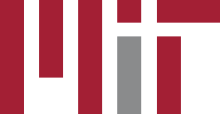This model is meant to help triage patients (prioritize certain patients for testing, quarantine, and medical attention) that require diagnosis for COVID-19. This model is not meant to diagnose COVID-19.
It takes both PA and AP X-ray images (in DICOM format) as inputs and outputs a prediction for each image from one of three labels (covid, opacity, nofinding). Those predicted with the labels "covid" and "opacity", as well as additional risk factors (Age, X-ray View Position) taken from the metadata, are flagged by the model for priority action.
The model analyzes each image for features predominant to COVID-19 images and for features present in images with Lung Opacity. If the model does not detect these features from the images, it returns a "nofinding" prediction. A "nofinding" prediction does not mean the patient is not sick for other diseases. The "covid" and "opacity" labels are not mutually exclusive. Mild and severe cases of COVID-19 exhibit lung opacity in images (which is also an idicator of Pneumonia), so the ideal worst case for the model is that an image from a patient who truly has COVID-19 symptoms is misclassified as "opacity". Therefore, the patient will still get priority action. This mitigates the current lack of COVID-19 X-ray data publicly available and the problem of false-negatives for binary classifiers.
For example, a 54-year old patient predicted to have lung opacity is flagged as higher priority for action by the model over a 20-year old patient predicted to have symptoms of COVID-19. Both are still flagged as higher priority for COVID-19 testing compared to those who were predicted to have no findings.
Demo Video:
- Classifier (A.I. model)
- Flagging Risk Factors
- Visualization for Classifier explainability (Grad-CAM)
Architecture: Resnet 34
Training dataset: 26,000 images with weighted resampling
Training dataset size before Resampling:
- "covid" - 186
- "opacity" - 5801
- "nofinding" - 19884
*Note: "nofinding" images include both healthy and non-healthy lungs that do not exhibit opacity
The model was trained on both AP and PA Chest X-rays.
Area under the Receiver Operator Characteristic (AUROC) was the chief metric used to determine model performance. It was calculated with a one-vs-all approach.
AUROC for "covid", "opacity", "nofinding" were at 99.97%, 92.64%, and 92.73%, respectively.
Updated Model (Use with Pytorch; .pth) : https://www.dropbox.com/s/o27w0dik8hdjaab/corona_resnet34.pth?dl=0
Datasets used: 1. https://github.com/ieee8023/covid-chestxray-dataset
Test_results: check the csv file in the repository
Colab_notebook (online version): check repository (Notice: NOT A DIAGNOSTIC TOOL)
I: Install Docker appropriate for your computer
II. In the terminal:
- Clone the repository
- Set the current directory to the root of this repository
- Run
docker-compose up -d - After the setup is finished, it should open a new browser where the app is located.
- To stop the application, run
docker-compose stop
For the first iteration of the model, I built a CNN neural network that classifies a given Chest X-ray as positive for pneumonia caused by COVID-19 or not. This model is originally meant to demonstrate a proof-of-concept. The model was trained, and accepts, Posteroanterior views only.
Rationale/More information: https://towardsdatascience.com/using-deep-learning-to-detect-ncov-19-from-x-ray-images-1a89701d1acd
We thank Dr. Jianshu Weng, Mr. Najib Ninaba and their organisation, AI Singapore (AISG), for their generous support in providing the infrastructure to train the latest iteration of the model.
Thank you to Ivan Leo for developing the application. Thank you to Chris, Raphael and Sunny for assisting in the application debugging.



